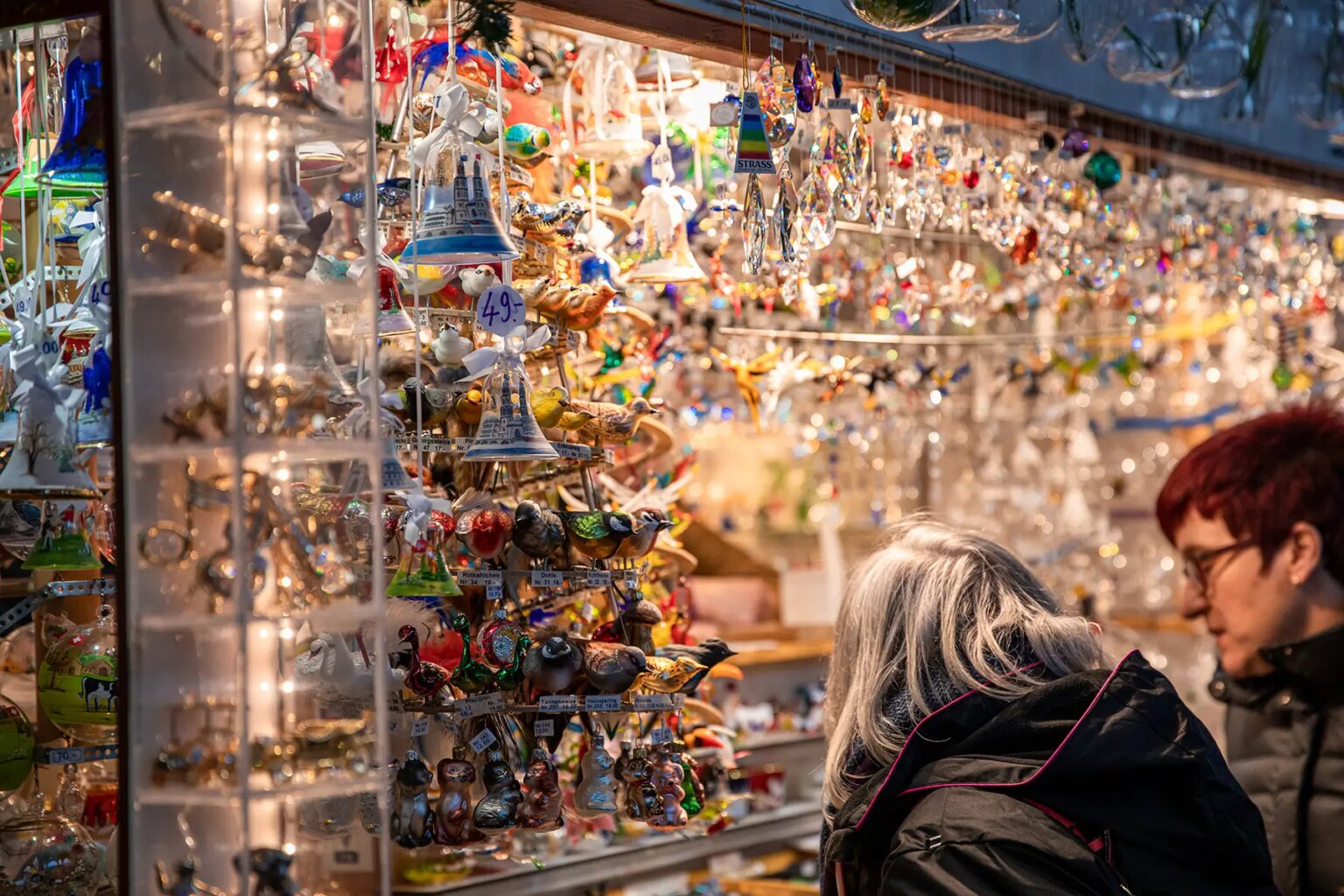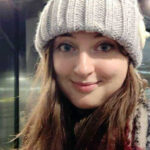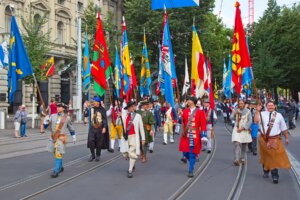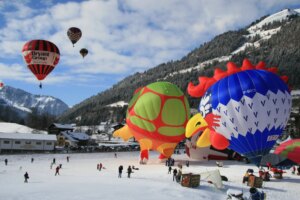Whether you’re living there or on holiday, Switzerland is a great place to be for Christmas. The streets are full of lights and decorations, glühwein is simmering at the Christmas markets, and the scent of roasted chestnuts is wafting through the air.
Some aspects of Switzerland’s holiday season are much the same as in other places – presents, a tree, and fairy lights are a must. However, there are a few unique traditions to discover.
Read on to find out how they celebrate Christmas in Switzerland and learn how to make the most of the festivities.
1. Before Christmas: turnip lanterns and Samichlaus
For many in Switzerland, the festive season begins with Räbechilbi (turnip party). Many towns and villages in German-speaking regions make Räbeliechtli (turnip lanterns) in November, carving beautiful designs from the humble turnip and lighting them from inside with a candle or a small light. Children often carve them at school with teachers or parents.
The highlight of the celebration comes in November, when many towns hold parades in which children carry their illuminated Räbelichtli through the streets, singing. If you’re in Zurich, don’t miss the annual Turnip Lantern Parade on the second Saturday in November.
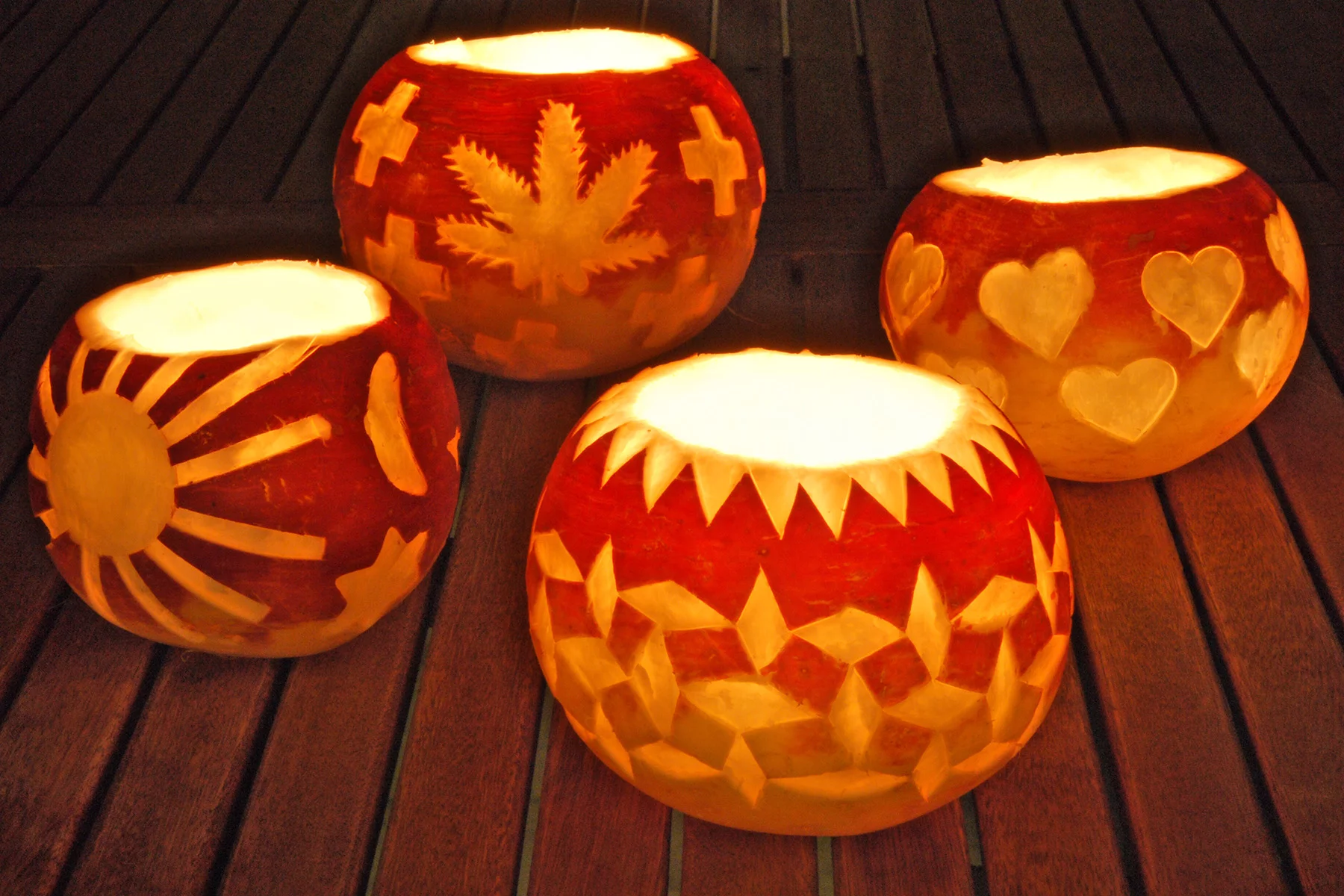
The festive cheer continues in early December. On 6 December, Samichlaus (based on the historical figure of Saint Nicholas) visits Switzerland, bringing with him a huge bag full of chocolates, peanuts, and mandarins for everyone to share. You can find out how to celebrate this favorite character and his helper in our article on Samichlaus and Schmutzli.
2. Baking cookies
One delightful festive tradition is that almost every Swiss family bakes several batches of Christmas cookies. They are usually fairly simple to make and contain spices associated with the season, such as cloves, cinnamon, and anise. They’re often in fun shapes and beautifully decorated.
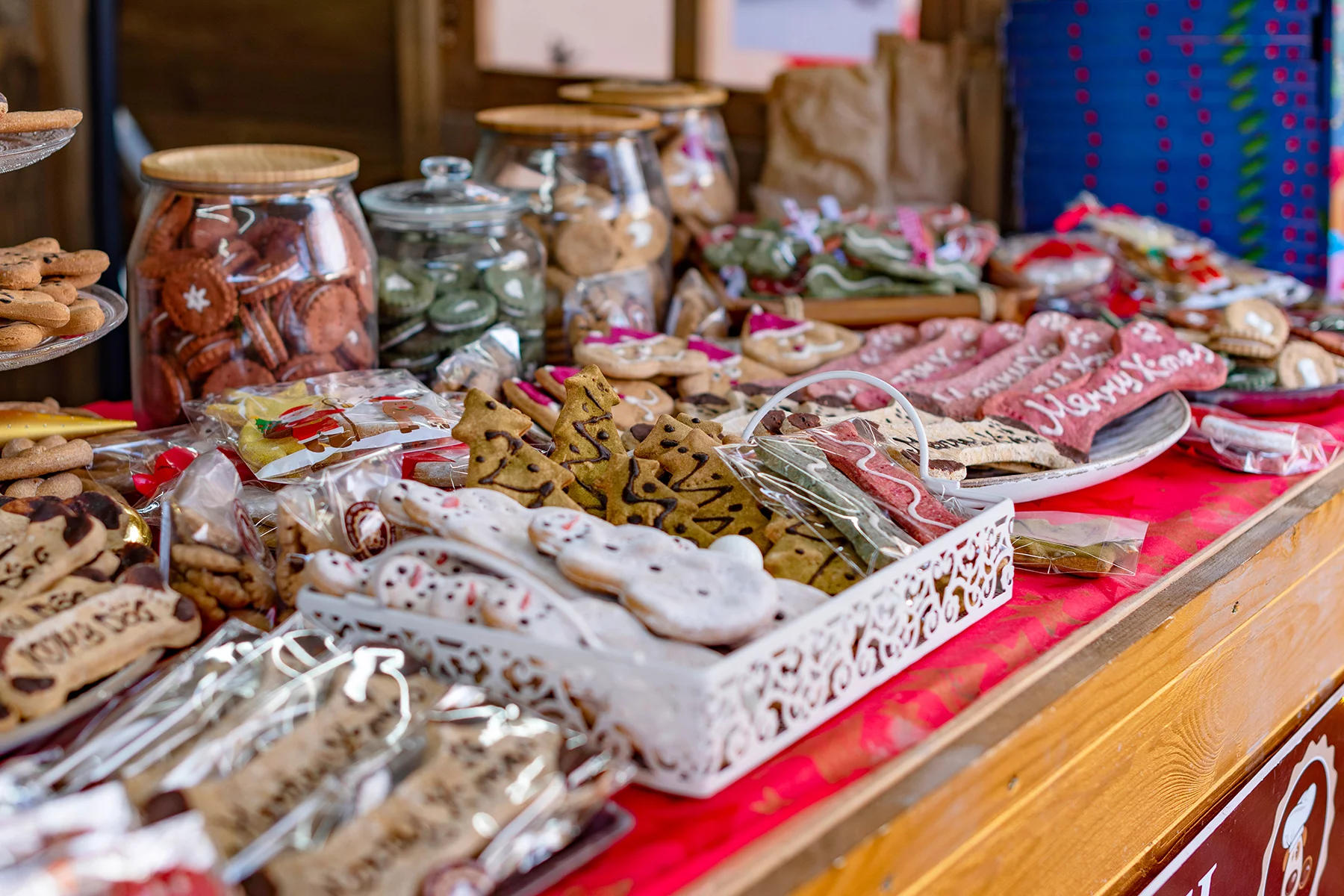
There are so many different kinds: Zimtsterne, Chräbbeli, Mailänderli, and Brunsli, to name a few. If you neatly arrange them in a cookie box or bag, they make the perfect small Christmas gift. So good!
3. Advent calendars and windows
As in many parts of Europe, people in Switzerland enjoy the tradition of counting the days until Christmas Eve. An advent calendar, either store-bought or homemade, is a common sight in Swiss homes over the festive season.
For a Christmas countdown on a larger scale, look out for Advent windows (Adventsfenster). You’re most likely to see these in smaller towns and villages.
Twenty-four households and other buildings from the neighborhood decorate one or more of their windows with a holiday theme. Every evening between 1 and 24 December, one window is revealed at a set time. Locals gather in front of the building to watch the unveiling and perhaps enjoy some music, Christmas carols, snacks, and a hot drink together.
The decorations usually use a combination of black paper for the different shapes and colorful paper that allows light through from inside the room. The scene can depict anything to do with the season – stars, nativity scenes, angels, etc.
Once opened, the windows stay lit every night until Christmas Eve (and sometimes even longer). In some communities, people spend the evening of 24 December visiting the 23 earlier Adventsfenster before heading to the final window.
4. Advent wreaths
Another way in which Swiss people like to count down the days to 24 December is with an Adventskranz (Advent wreath). This circular decoration made from fir branches has four large candles attached to it.

Unlike an Advent calendar or window, which counts the days from 1 December, Adventskränze mark the final four weeks before Christmas Eve. The first candle is lit four Sundays before Christmas Eve, and an additional one is lit each week.
5. Christmas markets
Whether you’re heading there for the atmosphere or for last-minute Christmas shopping, you’re sure to find Swiss Christmas Markets among the most enchanting in Europe. From late November until the end of December, towns and cities across Switzerland host these magical wooden chalets selling handcrafted gifts, ornaments, and seasonal treats. Many even feature live music, carol singing, and ice skating rinks.
The most famous markets in Switzerland include Basler Weihnachtsmarket in Basel, with over 150 stalls, and Marché de Noël in Montreux, with its flying Santa Claus attraction. Strolling among the picturesque chalets while sipping a warm glühwein is one of the best ways to get into the Christmas spirit.
6. Winter sports…
Although not strictly a Christmas tradition, winter sports are a great way to make the most of the cold weather and Switzerland’s breathtaking alpine landscape. Skiing and snowboarding are two of the most popular activities – the country is home to world-class resorts such as Zermatt, St. Moritz, and Verbier, which offer pristine slopes for all skill levels.

And that’s not all! If you want to experience the stunning Swiss scenery at a more leisurely pace, why not try snowshoeing, cross-country skiing, or ice skating? Families can also enjoy tobogganing on dedicated runs. Whatever your sporting background, there’s a way to enjoy the snowy season in Switzerland.
7. …and spas
After a day on the slopes (or basically anywhere else), where better to relax than in one of Switzerland’s luxurious spas? Many spa resorts are nestled in gorgeous alpine settings, meaning you can soak in a thermal bath while surrounded by snow-covered peaks. What could be more Christmassy?
Popular destinations include Leukerbad, Vals, and Scuol. It’s up to you whether you combine your retreat with winter sports or simply embrace it as a chance to relax and recharge at the end of a demanding year.
8. Swiss Christmas food
Like most other Swiss cuisine, Christmas food in Switzerland is rich and hearty. While the country doesn’t have a specific traditional festive food, you may come across some of the following meals and desserts:
- Fondue Chinoise: Although traditional cheese fondue is popular in Switzerland, Christmas usually brings something slightly different. Inspired by East Asian hot pot traditions, Fondue Chinoise (“Chinese fondue”) features a pot of hot broth at the center of the table into which diners dip thin slices of meat or fish.
- Filet am Teig: This festive dish involves a tender beef filet wrapped in pastry, sometimes with a layer of mushroom or herb filling. It’s a Christmas Eve favorite for many Swiss households.
- Birnbrot: This traditional pastry is a large roll filled with dried pears. It features seasonal spices and other dried fruits, which are sometimes marinated in alcohol such as wine or schnapps. Different regions of Switzerland have their own takes on this tasty treat.
- Bûche de Noël (Yule log): Commonly enjoyed in the French-speaking regions of Switzerland, this rolled sponge cake is filled with buttercream or ganache and decorated to look like a delightfully Christmassy log.
9. Christmas Eve
In Switzerland, the main festive celebration takes place on Christmas Eve, 24 December, known as Heiligabend or Réveillon de Noël. The evening is a time for reflection and enjoying the company of loved ones. People often enjoy a meal together, such as Fondue Chinoise or Filet am Teig.

One of the most exciting traditions is the reveal of the Christmas tree – unlike in many other countries, it’s customary for many Swiss households to wait until Christmas Eve to unveil their decorated tree. However, just like elsewhere, the tree may be adorned with ornaments, a star or angel at the top, and even real candles.
Other traditions that take place during Heiligabend include gift-giving and singing traditional carols. Religious households might also attend a church service such as Midnight Mass.
10. Christmas Day
Christmas Day (Weihnachtstag or Noël) on 25 December is a public holiday in Switzerland, but it typically involves fewer traditions. Often, people will visit friends, family, and neighbors and spend the day together. Activities may include sharing meals, going for leisurely walks, and enjoying the festive ambiance.
The next day, St. Stephen’s Day (Stephanstag or le lendemain de Noël), is also a public holiday in many cantons. You may find that banks and businesses are mostly closed, so it’s the perfect time to continue celebrating, enjoy wintery activities, or simply unwind after the festivities.
